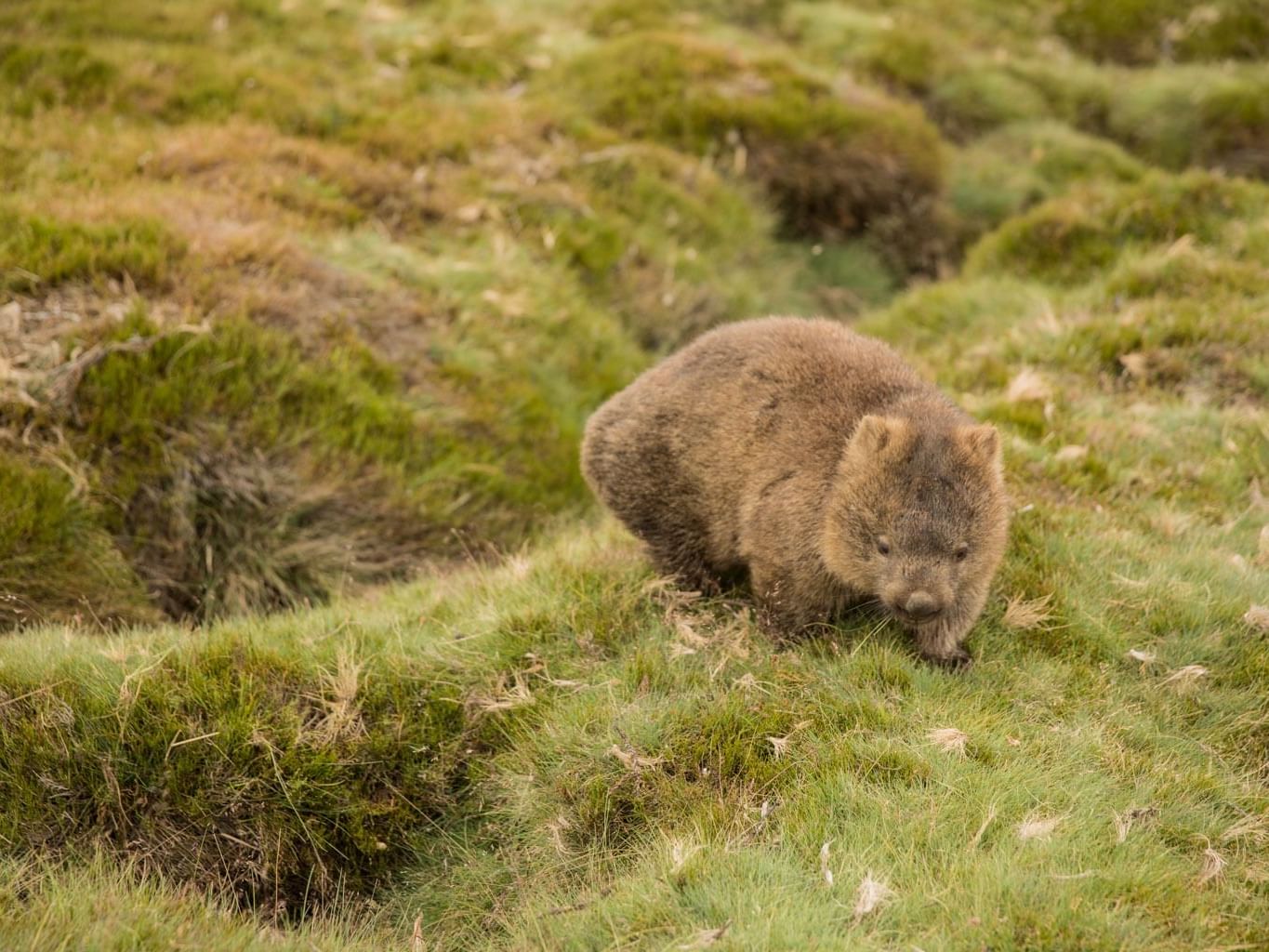Cradle Mountain Wildlife - Wombats
Cradle Mountain-Lake St Clair National Park contains ideal habitat for many of Tasmania’s native creatures—from hundreds of bird species to our enigmatic marsupials.
Most Tasmanian mammals are nocturnal, and more likely to be seen at dawn and dusk. As the sun sets, Cradle’s forests and plains come alive with foraging wallabies, pademelons, quolls, Tasmanian devils, and perhaps our most lovable resident, the common wombat.
Meet the master excavators
Wombats are the world’s largest burrowing mammals. These solitary, sleep-loving herbivores can grow up to 85cm in length and weigh as much as 20 kilos. Early European settlers referred to them as badgers, but they are in fact most closely related to koalas.
Wombats are powerful diggers and excavate large burrows that can be as much as 20 metres in length. They spend up to 16 hours a day sleeping in these dens, emerging at dusk to feed. Their strong front teeth never stop growing, but are ground down through grazing and gnawing through roots and other obstructions as they clear new chambers for their burrows.
Female wombats raise a single joey in their backwards-facing pouch (handy for keeping the dirt out). The young wombat stays in the pouch for six months, feeding on its mother’s milk before beginning to graze. Wombats become independent at 18 months.
Wombats have a hard, tough rump, which they can use as protection against attackers—they’ve even been known to crush the skulls of predators against the roof of their burrows using their formidable back end.
Wombat poo – signs and wonders
One of the most intriguing things about wombats is their unique, cube-shaped droppings. This peculiarity is due to horizontal ridges in their large intestine, and an extremely slow digestive system, which creates dense, compacted waste. You will often see wombat droppings deposited in an elevated position on rocks or logs as a visible sign to other wombats that they’re in someone else’s territory. The obvious advantage of square poo is that it doesn’t roll away—meaning these territorial markers will stay where they’re intended to!
Wombat spotting
Wombats are common throughout Tasmania, and they thrive within Cradle Mountain-Lake St Clair National Park. You’re most likely to see the teddy-bear shape of a grazing wombat at dusk, as they feed in open grasslands. Wombats are also commonly spotted along the road to the national park, so keep a careful watch as you pass any open grassy areas (and remember to drive slowly, especially at night).
